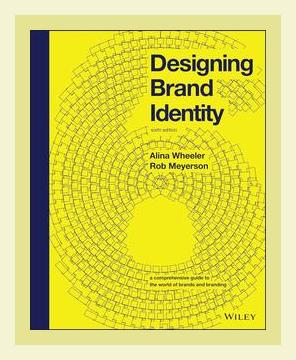Marketing and SalesBrand Management
Title: Designing Brand Identity: An Essential Guide for the Whole Branding Team
Author: Alina Wheeler
Publication Year: 2017
Category: Brand Management
Summary of “Designing Brand Identity: An Essential Guide for the Whole Branding Team”
Introduction
Alina Wheeler’s “Designing Brand Identity” is a comprehensive guide that covers key principles and best practices in brand management. It is divided into five main sections: brand fundamentals, brand positioning, brand identity, brand experience, and managing brand assets. Each section is designed to offer actionable advice to anyone involved in the branding process, from designers to marketing managers.
1. Brand Fundamentals
Major Points:
- Definition of Brand: Wheeler emphasizes that a brand is more than just a logo or tagline; it is the sum of perceptions held by customers. A strong brand is consistent, authentic, and aligned with customer emotions.
Actionable Advice: Conduct a brand audit to understand the current perceptions of your brand. Gather feedback from diverse stakeholders to gain a comprehensive view.
- Importance of Purpose, Vision, and Values: A brand must have a clear purpose, vision, and set of values to guide all branding efforts. These elements should resonate both internally with employees and externally with customers.
Actionable Advice: Hold workshops with key stakeholders to define or refine your brand’s purpose, vision, and values.
2. Brand Positioning
Major Points:
- Articulating Brand Positioning: Brand positioning involves defining the unique place a brand occupies in the minds of customers. It includes aspects like market segmentation, competitive analysis, and value proposition.
Actionable Advice: Develop a positioning statement that clearly articulates your brand’s unique value and differentiation from competitors. A template for this could include components like “To [target market], [brand] is the [category] that [benefit] because [reason].”
- Differentiation and Relevance: To stand out, a brand must offer something distinct and relevant. Wheeler uses examples of successful brands like Apple and Nike, which have clear, compelling differentiators.
Actionable Advice: Conduct competitive analysis to identify gaps in the market. Leverage these insights to position your brand in a way that addresses unmet needs or surpasses existing offerings.
3. Brand Identity
Major Points:
- Creating Visual and Verbal Identity: Brand identity is the tangible embodiment of a brand through visual elements (logo, color schemes, typography) and verbal elements (tagline, messaging).
Actionable Advice: Create a comprehensive brand style guide that includes detailed specifications for logos, colors, typography, and tone of voice. Ensuring consistency across all touchpoints enhances brand recognition and trust.
- Crafting the Brand Story: A compelling brand story weaves together the brand’s history, values, and vision. Wheeler highlights how storytelling fosters emotional connections with the audience.
Actionable Advice: Develop a brand narrative that aligns with your brand’s purpose and values. Share this narrative across marketing channels to create a cohesive brand experience.
4. Brand Experience
Major Points:
- Customer Interaction: Every touchpoint a customer has with the brand contributes to the overall brand experience. This includes everything from website usability to customer service quality.
Actionable Advice: Map out the customer journey to identify all brand touchpoints. Evaluate each touchpoint to ensure that it provides a positive and consistent brand experience.
- Holistic Integration: Ensuring brand coherence across various mediums (print, digital, in-store) is crucial. Wheeler gives examples like Starbucks, where the in-store experience is meticulously crafted to align with digital and advertising elements.
Actionable Advice: Conduct a brand audit across all channels to ensure cohesive messaging and design. Make necessary adjustments to integrate all branding efforts holistically.
5. Managing Brand Assets
Major Points:
- Brand Governance: Effective brand management requires clear guidelines and oversight to maintain consistency. This involves establishing brand standards and ensuring all stakeholders adhere to them.
Actionable Advice: Create a brand governance team responsible for overseeing brand consistency and managing deviations. Implement a system for regular review and updates of brand guidelines.
- Measuring Brand Equity: Brand equity refers to the value derived from customer perception and loyalty. Tracking key metrics like brand awareness, preference, and loyalty helps in assessing brand performance.
Actionable Advice: Utilize brand tracking tools to measure metrics indicative of brand health. Regularly review this data to make informed decisions to strengthen brand equity.
Conclusion
Alina Wheeler’s “Designing Brand Identity” is a vital resource for anyone involved in branding. Its structured approach and practical advice help navigate the complexities of building and sustaining a strong brand. By understanding and implementing the key points from each section, businesses can develop a cohesive and compelling brand identity.
